SEO
Beginner’s Guide To YouTube Video Advertising
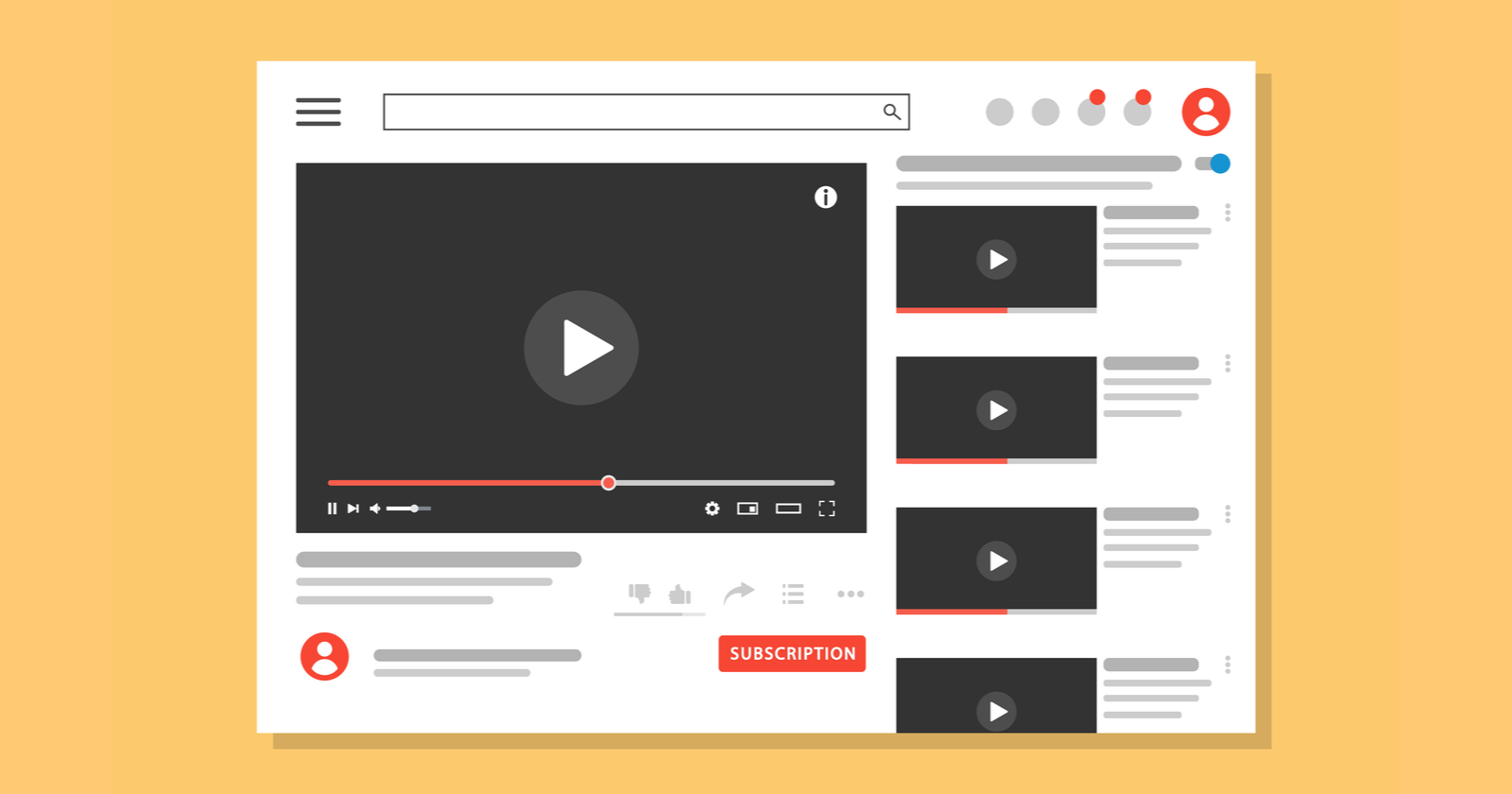
Today’s advertiser is looking for ways to use video content in ads to increase visibility, engage, and convert leads.
The good news is that getting started with video ads is easier than ever.
Video ads appear on many websites and apps across the web as well as on YouTube, which has over 2 billion active users per month.
YouTube enables advertisers to target specific audiences, behaviors, or intentions, making it an effective way to get results throughout the stages of the customer buying cycle.
In addition, the majority of paid ad platforms offer a video campaign or ad format including Google Ads, Microsoft Ads, Facebook, Pinterest, LinkedIn, and TikTok.
For the purposes of this post, we will focus on getting up and running on YouTube ads through the Google Ads platform as it is the largest video platform.
And because they’re managed through the Google Ads platform, YouTube ads are also convenient to incorporate into your current PPC search and display ads.
Here’s what you need to know to get started.
YouTube Ads Video Assets
First, let’s take a look at the video assets you have available.
- Do you have current video ads you can use?
- Any reworking/editing existing videos?
- Or do you need to create new ones with a video producer or use templates?
- Content of the video: For ads, the video should start out fast and keep the user’s attention. A great place to start learning the best practices for effective video ads on YouTube is the many tutorials on Google Ads.
- Length and quality: the shortest video ad length is 6 seconds and it is recommended to ultimately limit the length to 3 minutes or less. A good basic rule of thumb is to start with 15 seconds to 30-second video ads to get your message communicated.
- Video do-it-yourself tools: Google has a video builder (in beta), as well as paid tools online such as Promo or Animoto offer subscription-based video template capabilities.
Once you are happy with your video, it must be uploaded to YouTube. Get the YouTube video URL ready to create the ad later.
Learn More About Audiences
YouTube and ‘Think With Google’ have a Find My Audience tool to get the creative juices flowing to help you think about building your audience profile for these new attention-getting video ads.
This tool allows you to select either in-market or affinity audiences in a limited number of categories such as Autos & Vehicles, Business Services, Media & Entertainment, Software, and more.
This is not a full campaign builder tool, but more of a tool to inspire what you are about to start next.
Your Step-By-Step Process To Create YouTube Ads
If you haven’t yet set up your YouTube, you’ll learn how to do that here.
Now, you’re ready to start advertising.
In the campaigns tab, click the blue plus button to start a new campaign.
This is a general step-by-step process, but at times you might feel like it is a “Choose Your Own Adventure” book.
If you select a campaign goal type, you will get various suggestions to help on campaign subtypes and ad formats towards that goal as you create the campaign.
It is okay to select Create a campaign without a goals guidance.
1. Choosing The Right Goals
The campaign objective you choose will generally fit into one of the three main goals: awareness, consideration, or action/purchase.
Moving further into the set-up process will present you with options that best fit those goals.
2. Select The Video Campaign Type
You will be presented with various campaign type options, depending on the goal first selected.
For action objectives, they will also present the Google Ads account conversion tracking goals they will use for bid optimization.
Here we want to get to choose the Video campaign type.
All of the campaign goals except App and local allow the Video type.
3. Select SubTypes
Next, you will be presented with various subtypes, depending on the previous selections.
Some of the options are drive conversions, video reach campaigns, out-stream, non-skippable in-stream, and others.
Again the process is guiding you to the ad format, targeting, bids, etc. best suited for your campaign goals.
4. Configure The Settings
Each campaign subtype will prompt for general settings.
Throughout the set-up, campaign estimates are generated on the right-hand side to give you an idea of the volume you can expect.
Here we will see several campaign settings including campaign name, bid strategy, budget and dates, networks, locations, languages, content exclusions.
A few of these settings need a more detailed explanation.
- Bid strategy: Video ads will allow bidding per impression, per view, or conversion-based. For awareness campaigns, Viewable CPM (cost-per-thousand) and Maximum CPV (cost-per-view) are appropriate bid strategies to use. If the campaign is action/ conversions based, Target CPA and Maximize conversions strategies will work to maximize ROI.
- Networks: Notable to be aware of is the Video partners on the Display Network. This will help to maximize reach outside of YouTube, however, if you want to limit ads to only the YouTube website, then you will want to opt out of these networks.
- Content exclusions: It is important to pay attention to this area to define the inventory types and content labels you find acceptable to serve your brand’s ads on. Expand or limit content placement types as appropriate to your brand values.
5. Creating The Adgroup Targeting
At the adgroup level, we get to the fun part of selecting the targeting, similar to the search and display campaigns in Google Ads.
- Demographics: age, gender, parental status, and household income.
- Audience segments: remarketing, in-market, affinity, and life events.
- Detailed demographics: you can find a few extra nuggets here including employment targeting.
- Content: keywords, topics, and placements added here narrow the audience. Note, here you can target specific YouTube channels or videos here.
6. Creating The YouTube Ad
Finally, use the YouTube link to your video to create the first ad.
What can be frustrating at this point is not all ad types are available to create and you will see “This ad format is not available because of the subtype or goal of the campaign.”
YouTube Ad Formats
The best guarantee here is to plan ahead to ensure you have the campaign goals and subtypes aligned with the type of ad you would like to run.
Final Thoughts
After setting up and running the first few YouTube campaigns, performance data will flow in and inform optimization and future campaigns strategies.
YouTube offers a great opportunity to reach your audience at all stages of the purchase cycle.
This is also a great opportunity to gather data at scale on the targeting and creative that is successful to roll out to other paid video ad platforms.
More resources:
Featured Image: VELvector/Shutterstock
SEO
Google Cautions On Blocking GoogleOther Bot

Google’s Gary Illyes answered a question about the non-search features that the GoogleOther crawler supports, then added a caution about the consequences of blocking GoogleOther.
What Is GoogleOther?
GoogleOther is a generic crawler created by Google for the various purposes that fall outside of those of bots that specialize for Search, Ads, Video, Images, News, Desktop and Mobile. It can be used by internal teams at Google for research and development in relation to various products.
The official description of GoogleOther is:
“GoogleOther is the generic crawler that may be used by various product teams for fetching publicly accessible content from sites. For example, it may be used for one-off crawls for internal research and development.”
Something that may be surprising is that there are actually three kinds of GoogleOther crawlers.
Three Kinds Of GoogleOther Crawlers
- GoogleOther
Generic crawler for public URLs - GoogleOther-Image
Optimized to crawl public image URLs - GoogleOther-Video
Optimized to crawl public video URLs
All three GoogleOther crawlers can be used for research and development purposes. That’s just one purpose that Google publicly acknowledges that all three versions of GoogleOther could be used for.
What Non-Search Features Does GoogleOther Support?
Google doesn’t say what specific non-search features GoogleOther supports, probably because it doesn’t really “support” a specific feature. It exists for research and development crawling which could be in support of a new product or an improvement in a current product, it’s a highly open and generic purpose.
This is the question asked that Gary narrated:
“What non-search features does GoogleOther crawling support?”
Gary Illyes answered:
“This is a very topical question, and I think it is a very good question. Besides what’s in the public I don’t have more to share.
GoogleOther is the generic crawler that may be used by various product teams for fetching publicly accessible content from sites. For example, it may be used for one-off crawls for internal research and development.
Historically Googlebot was used for this, but that kind of makes things murky and less transparent, so we launched GoogleOther so you have better controls over what your site is crawled for.
That said GoogleOther is not tied to a single product, so opting out of GoogleOther crawling might affect a wide range of things across the Google universe; alas, not Search, search is only Googlebot.”
It Might Affect A Wide Range Of Things
Gary is clear that blocking GoogleOther wouldn’t have an affect on Google Search because Googlebot is the crawler used for indexing content. So if blocking any of the three versions of GoogleOther is something a site owner wants to do, then it should be okay to do that without a negative effect on search rankings.
But Gary also cautioned about the outcome that blocking GoogleOther, saying that it would have an effect on other products and services across Google. He didn’t state which other products it could affect nor did he elaborate on the pros or cons of blocking GoogleOther.
Pros And Cons Of Blocking GoogleOther
Whether or not to block GoogleOther doesn’t necessarily have a straightforward answer. There are several considerations to whether doing that makes sense.
Pros
Inclusion in research for a future Google product that’s related to search (maps, shopping, images, a new feature in search) could be useful. It might be helpful to have a site included in that kind of research because it might be used for testing something good for a site and be one of the few sites chosen to test a feature that could increase earnings for a site.
Another consideration is that blocking GoogleOther to save on server resources is not necessarily a valid reason because GoogleOther doesn’t seem to crawl so often that it makes a noticeable impact.
If blocking Google from using site content for AI is a concern then blocking GoogleOther will have no impact on that at all. GoogleOther has nothing to do with crawling for Google Gemini apps or Vertex AI, including any future products that will be used for training associated language models. The bot for that specific use case is Google-Extended.
Cons
On the other hand it might not be helpful to allow GoogleOther if it’s being used to test something related to fighting spam and there’s something the site has to hide.
It’s possible that a site owner might not want to participate if GoogleOther comes crawling for market research or for training machine learning models (for internal purposes) that are unrelated to public-facing products like Gemini and Vertex.
Allowing GoogleOther to crawl a site for unknown purposes is like giving Google a blank check to use your site data in any way they see fit outside of training public-facing LLMs or purposes related to named bots like GoogleBot.
Takeaway
Should you block GoogleOther? It’s a coin toss. There are possible potential benefits but in general there isn’t enough information to make an informed decision.
Listen to the Google SEO Office Hours podcast at the 1:30 minute mark:
Featured Image by Shutterstock/Cast Of Thousands
SEO
AI Search Boosts User Satisfaction

A new study finds that despite concerns about AI in online services, users are more satisfied with search engines and social media platforms than before.
The American Customer Satisfaction Index (ACSI) conducted its annual survey of search and social media users, finding that satisfaction has either held steady or improved.
This comes at a time when major tech companies are heavily investing in AI to enhance their services.
Search Engine Satisfaction Holds Strong
Google, Bing, and other search engines have rapidly integrated AI features into their platforms over the past year. While critics have raised concerns about potential negative impacts, the ACSI study suggests users are responding positively.
Google maintains its position as the most satisfying search engine with an ACSI score of 81, up 1% from last year. Users particularly appreciate its AI-powered features.
Interestingly, Bing and Yahoo! have seen notable improvements in user satisfaction, notching 3% gains to reach scores of 77 and 76, respectively. These are their highest ACSI scores in over a decade, likely due to their AI enhancements launched in 2023.
The study hints at the potential of new AI-enabled search functionality to drive further improvements in the customer experience. Bing has seen its market share improve by small but notable margins, rising from 6.35% in the first quarter of 2023 to 7.87% in Q1 2024.
Customer Experience Improvements
The ACSI study shows improvements across nearly all benchmarks of the customer experience for search engines. Notable areas of improvement include:
- Ease of navigation
- Ease of using the site on different devices
- Loading speed performance and reliability
- Variety of services and information
- Freshness of content
These improvements suggest that AI enhancements positively impact various aspects of the search experience.
Social Media Sees Modest Gains
For the third year in a row, user satisfaction with social media platforms is on the rise, increasing 1% to an ACSI score of 74.
TikTok has emerged as the new industry leader among major sites, edging past YouTube with a score of 78. This underscores the platform’s effective use of AI-driven content recommendations.
Meta’s Facebook and Instagram have also seen significant improvements in user satisfaction, showing 3-point gains. While Facebook remains near the bottom of the industry at 69, Instagram’s score of 76 puts it within striking distance of the leaders.
Challenges Remain
Despite improvements, the study highlights ongoing privacy and advertising challenges for search engines and social media platforms. Privacy ratings for search engines remain relatively low but steady at 79, while social media platforms score even lower at 73.
Advertising experiences emerge as a key differentiator between higher- and lower-satisfaction brands, particularly in social media. New ACSI benchmarks reveal user concerns about advertising content’s trustworthiness and personal relevance.
Why This Matters For SEO Professionals
This study provides an independent perspective on how users are responding to the AI push in online services. For SEO professionals, these findings suggest that:
- AI-enhanced search features resonate with users, potentially changing search behavior and expectations.
- The improving satisfaction with alternative search engines like Bing may lead to a more diverse search landscape.
- The continued importance of factors like content freshness and site performance in user satisfaction aligns with long-standing SEO best practices.
As AI becomes more integrated into our online experiences, SEO strategies may need to adapt to changing user preferences.
Featured Image: kate3155/Shutterstock
SEO
Google To Upgrade All Retailers To New Merchant Center By September

Google has announced plans to transition all retailers to its updated Merchant Center platform by September.
This move will affect e-commerce businesses globally and comes ahead of the holiday shopping season.
The Merchant Center is a tool for online retailers to manage how their products appear across Google’s shopping services.
Key Changes & Features
The new Merchant Center includes several significant updates.
Product Studio
An AI-powered tool for content creation. Google reports that 80% of current users view it as improving efficiency.
This feature allows retailers to generate tailored product assets, animate still images, and modify existing product images to match brand aesthetics.
It also simplifies tasks like background removal and image resolution enhancement.
Centralized Analytics
A new tab consolidating various business insights, including pricing data and competitive analysis tools.
Retailers can access pricing recommendations, competitive visibility reports, and retail-specific search trends, enabling them to make data-driven decisions and capitalize on popular product categories.
Redesigned Navigation
Google claims the new interface is more intuitive and cites increased setup success rates for new merchants.
The platform now offers simplified website verification processes and can pre-populate product information during setup.
Initial User Response
According to Google, early adopters have shown increased engagement with the platform.
The company reports a 25% increase in omnichannel merchants adding product offers in the new system. However, these figures have yet to be independently verified.
Jeff Harrell, Google’s Senior Director of Merchant Shopping, states in an announcement:
“We’ve seen a significant increase in retention and engagement among existing online merchants who have moved to the new Merchant Center.”
Potential Challenges and Support
While Google emphasizes the upgrade’s benefits, some retailers, particularly those comfortable with the current version, may face challenges adapting to the new system.
The upgrade’s mandatory nature could raise concerns among users who prefer the existing interface or have integrated workflows based on the current system.
To address these concerns, Google has stated that it will provide resources and support to help with the transition. This includes tutorial videos, detailed documentation, and access to customer support teams for troubleshooting.
Industry Context
This update comes as e-commerce platforms evolve, with major players like Amazon and Shopify enhancing their seller tools. Google’s move is part of broader efforts to maintain competitiveness in the e-commerce services sector.
The upgrade could impact consumers by improving product listings and providing more accurate information across Google’s shopping services.
For the e-commerce industry as a whole, it signals a continued push towards AI-driven tools and data-centric decision-making.
Transition Timeline
Google states that retailers will be automatically upgraded by September if they still need to transition.
The company advises users to familiarize themselves with the new features before the busy holiday shopping period.
Featured Image: BestForBest/Shutterstock
-

 SEARCHENGINES5 days ago
SEARCHENGINES5 days agoBillions Of Google goo.gl URLs To 404 In The Future
-

 SEO7 days ago
SEO7 days ago26 Common SEO Myths, Debunked
-
SEARCHENGINES4 days ago
Daily Search Forum Recap: July 22, 2024
-

 SEARCHENGINES6 days ago
SEARCHENGINES6 days agoGoogle Core Update Coming, Ranking Volatility, Bye Search Notes, AI Overviews, Ads & More
-

 SEO5 days ago
SEO5 days ago11 Copyscape Alternatives To Check Plagiarism
-

 SEO6 days ago
SEO6 days agoGoogle Warns Of Last Chance To Export Notes Search Data
-
SEARCHENGINES3 days ago
Daily Search Forum Recap: July 23, 2024
-

 AFFILIATE MARKETING6 days ago
AFFILIATE MARKETING6 days agoThe Top 5 AI Tools That Can Revolutionize Your Workflow and Boost Productivity


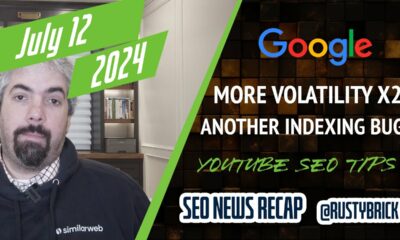

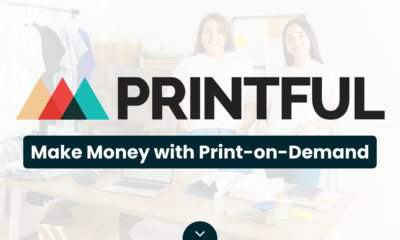



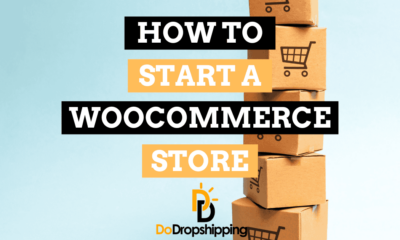

![YouTube Ad Specs, Sizes, and Examples [2024 Update] YouTube Ad Specs, Sizes, and Examples](https://articles.entireweb.com/wp-content/uploads/2024/06/YouTube-Ad-Specs-Sizes-and-Examples-400x240.jpg)
![YouTube Ad Specs, Sizes, and Examples [2024 Update] YouTube Ad Specs, Sizes, and Examples](https://articles.entireweb.com/wp-content/uploads/2024/06/YouTube-Ad-Specs-Sizes-and-Examples-80x80.jpg)
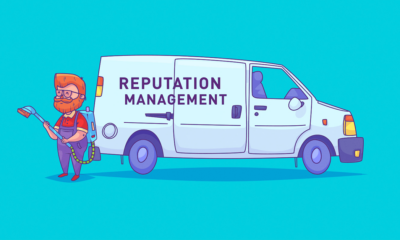



You must be logged in to post a comment Login